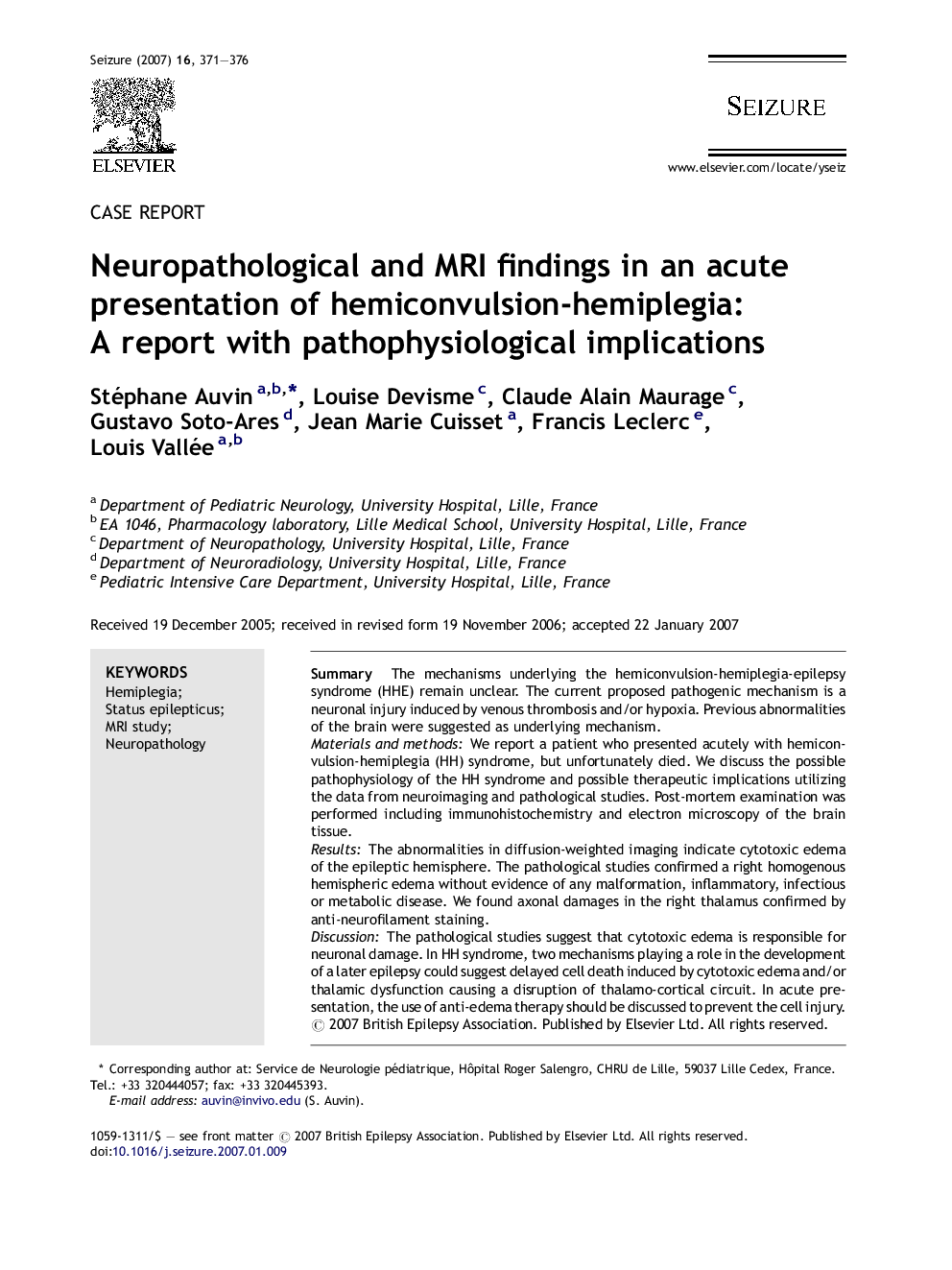| Article ID | Journal | Published Year | Pages | File Type |
|---|---|---|---|---|
| 342517 | Seizure | 2007 | 6 Pages |
SummaryThe mechanisms underlying the hemiconvulsion-hemiplegia-epilepsy syndrome (HHE) remain unclear. The current proposed pathogenic mechanism is a neuronal injury induced by venous thrombosis and/or hypoxia. Previous abnormalities of the brain were suggested as underlying mechanism.Materials and methodsWe report a patient who presented acutely with hemiconvulsion-hemiplegia (HH) syndrome, but unfortunately died. We discuss the possible pathophysiology of the HH syndrome and possible therapeutic implications utilizing the data from neuroimaging and pathological studies. Post-mortem examination was performed including immunohistochemistry and electron microscopy of the brain tissue.ResultsThe abnormalities in diffusion-weighted imaging indicate cytotoxic edema of the epileptic hemisphere. The pathological studies confirmed a right homogenous hemispheric edema without evidence of any malformation, inflammatory, infectious or metabolic disease. We found axonal damages in the right thalamus confirmed by anti-neurofilament staining.DiscussionThe pathological studies suggest that cytotoxic edema is responsible for neuronal damage. In HH syndrome, two mechanisms playing a role in the development of a later epilepsy could suggest delayed cell death induced by cytotoxic edema and/or thalamic dysfunction causing a disruption of thalamo-cortical circuit. In acute presentation, the use of anti-edema therapy should be discussed to prevent the cell injury.
